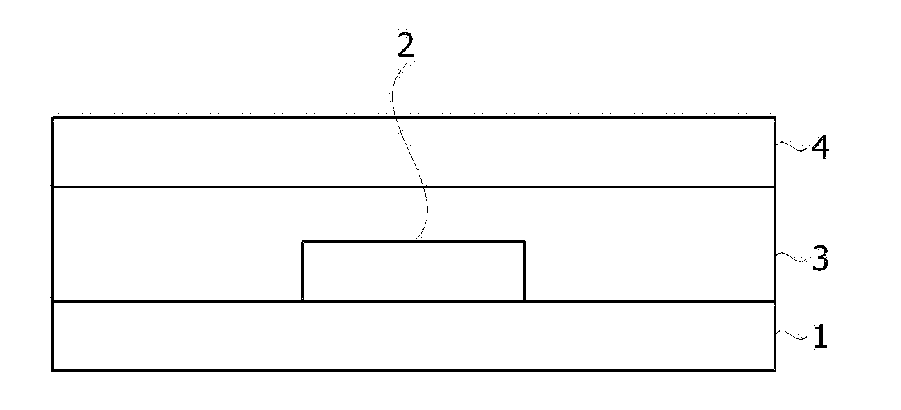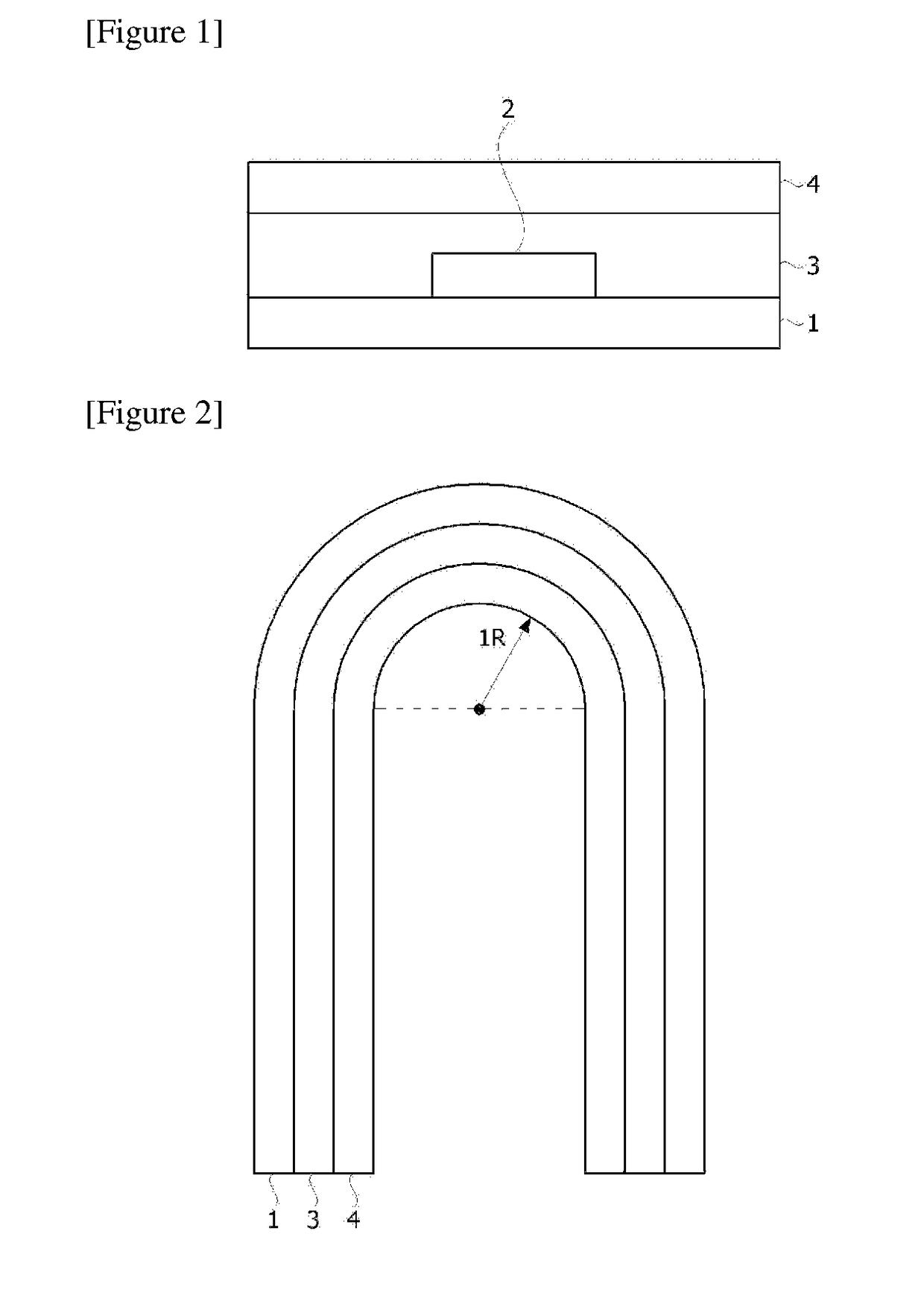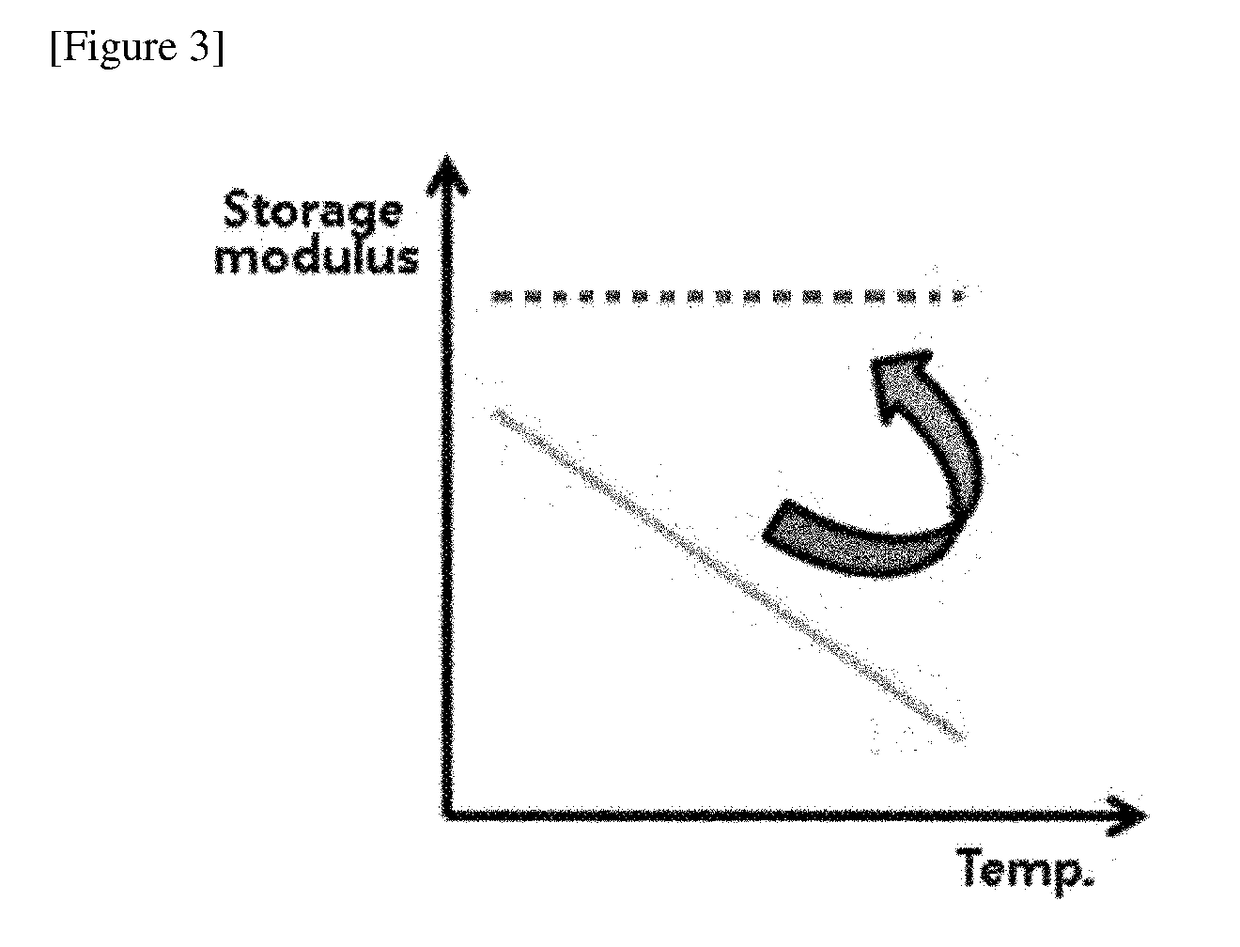Adhesive film and organic electronic device comprising the same
- Summary
- Abstract
- Description
- Claims
- Application Information
AI Technical Summary
Benefits of technology
Problems solved by technology
Method used
Image
Examples
example 2
[0115]An adhesive composition and an adhesive film were produced in the same manner as in Example 1, except that a styrene-isobutylene copolymer (SIBS 102T, Mw: 100,000, Kaneka) as a polymer derived from butylene, a hydrogenated bisphenol A epoxy resin (YX8000, epoxy equivalent: 201 g / eq, Mitsubishi Chemical) as a curable oligomer, and a silane-modified epoxy resin (KSR-177, Kukdo Chemical) as a curable monomer were introduced into a reaction vessel at a weight ratio of 60:15:25 (SIBS 102T:YX8000:KSR-177), respectively.
experimental example 2
g
[0124]Before curing the adhesive film prepared in Examples and Comparative Examples, the film was laminated to a thickness of 600 μm, and physical properties were measured using ARES equipment as follows. The viscosity was measured depending on shear stress in conditions of a temperature of 65° C., a strain of 5% and a frequency of 1 Hz.
Experimental Example 3—Step Filling Property
[0125]In a simple substrate on which steps of 10 μm are formed, the adhesive film prepared in Examples and Comparative Examples was adhered to the center portion by using a roll laminator. A glass having the same size as the prepared specimen is pressed in the vertical direction and bonded together by applying a vacuum of 100 pa and a pressure of 0.5 MPa under a temperature condition of 65° C. with a vacuum bonding machine. The cohesiveness was determined depending on looseness of the step forming region in the front side of the adhesive and classified as O when the loosed portion of the step formation reg...
experimental example 4
[0126]A transparent electrode is formed on a polyimide substrate by a vacuum deposition method, and an organic material layer is formed on the transparent electrode. The organic material layer comprises a hole injecting layer, a hole transporting layer, a light emitting layer, an electron injecting layer and an electron transporting layer. Then, a reflective electrode is further formed on the organic material layer. Thereafter, the adhesive film prepared in Examples and Comparative Examples was sealed so as to encapsulate the entire surface of the organic electronic element on the substrate, a cover substrate was formed on the adhesive film, and then curing was carried out under the same conditions as Experimental Example 1.
[0127]For the prepared organic electronic device, the presence or absence of cracks was visually observed after the folding test in which the process of folding the folding portion of the organic electronic device to a curvature radius of 1R (1 mm) under a temper...
PUM
| Property | Measurement | Unit |
|---|---|---|
| Temperature | aaaaa | aaaaa |
| Temperature | aaaaa | aaaaa |
| Temperature | aaaaa | aaaaa |
Abstract
Description
Claims
Application Information
 Login to View More
Login to View More - R&D
- Intellectual Property
- Life Sciences
- Materials
- Tech Scout
- Unparalleled Data Quality
- Higher Quality Content
- 60% Fewer Hallucinations
Browse by: Latest US Patents, China's latest patents, Technical Efficacy Thesaurus, Application Domain, Technology Topic, Popular Technical Reports.
© 2025 PatSnap. All rights reserved.Legal|Privacy policy|Modern Slavery Act Transparency Statement|Sitemap|About US| Contact US: help@patsnap.com



